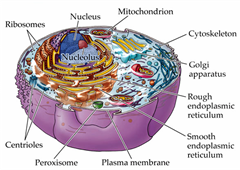Your digestive system is uniquely designed to turn the food you eat into nutrients, which the body uses for energy, growth and cell repair. Here's how it works.
Mouth
The mouth is the beginning of the digestive tract. In fact, digestion starts here as soon as you take the first bite of a meal. Chewing breaks the food into pieces that are more easily digested, while saliva mixes with food to begin the process of breaking it down into a form your body can absorb and use.
Throat
Also called the pharynx, the throat is the next destination for food you've eaten. From here, food travels to the esophagus or swallowing tube.
Esophagus
The esophagus is a muscular tube extending from the pharynx to the stomach. By means of a series of contractions, called peristalsis, the esophagus delivers food to the stomach. Just before the connection to the stomach there is a "zone of high pressure," called the lower esophageal sphincter; this is a "valve" meant to keep food from passing backwards into the esophagus.
Stomach
The stomach is a sac-like organ with strong muscular walls. In addition to holding the food, it's also a mixer and grinder. The stomach secretes acid and powerful enzymes that continue the process of breaking down the food. When it leaves the stomach, food is the consistency of a liquid or paste. From there the food moves to the small intestines.
Small Intestine
Made up of three segments, the duodenum, jejunum, and ileum, the small intestine is a long tube loosely coiled in the abdomen(spread out, it would be more than 20 feet long). The small intestine continues the process of breaking down food by using enzymes released by the pancreas and bile from the livers. Bile is a compound that aids in the digestion of fat and eliminates waste products from the blood. Peristalsis (contractions) is also at work in this organ, moving food through and mixing it up with digestive secretions. The duodenum is largely responsible for continuing the process of breaking down food, with the jejunum and ileum being mainly responsible for the absorption of nutrients into the bloodstream.
Why is digestion important?
Digestion is important for breaking down food into nutrients, which the body uses for energy, growth, and cell repair. Food and drink must be changed into smaller molecules of nutrients before the blood absorbs them and carries them to cells throughout the body. The body breaks down nutrients from food and drink into carbohydrates, protein, fats, and vitamins.
Carbohydrates. Carbohydrates are the sugars, starches, and fiber found in many foods. Carbohydrates are called simple or complex, depending on their chemical structure. Simple carbohydrates include sugars found naturally in foods such as fruits, vegetables, milk, and milk products, as well as sugars added during food processing. Complex carbohydrates are starches and fiber found in whole-grain breads and cereals, starchy vegetables, and legumes. The Dietary Guidelines for Americans, 2010, recommends that 45 to 65 percent of total daily calories come from carbohydrates.1
Protein. Foods such as meat, eggs, and beans consist of large molecules of protein that the body digests into smaller molecules called amino acids. The body absorbs amino acids through the small intestine into the blood, which then carries them throughout the body. The Dietary Guidelines for Americans, 2010, recommends that 10 to 35 percent of total daily calories come from protein.1
Fats. Fat molecules are a rich source of energy for the body and help the body absorb vitamins. Oils, such as corn, canola, olive, safflower, soybean, and sunflower, are examples of healthy fats. Butter, shortening, and snack foods are examples of less healthy fats. During digestion, the body breaks down fat molecules into fatty acids and glycerol. The Dietary Guidelines for Americans, 2010, recommends that 20 to 35 percent of total daily calories come from fat.1
Vitamins. Scientists classify vitamins by the fluid in which they dissolve. Water-soluble vitamins include all the B vitamins and vitamin C. Fat-soluble vitamins include vitamins A, D, E, and K. Each vitamin has a different role in the body’s growth and health. The body stores fat-soluble vitamins in the liver and fatty tissues, whereas the body does not easily store water-soluble vitamins and flushes out the extra in the urine. Read more about vitamins on the Office of Dietary Supplements website at www.ods.od.nih.govExternal NIH Link.
1U.S. Department of Agriculture and U.S. Department of Health and Human Services. Dietary Guidelines for Americans, 2010. 7th ed. Washington, D.C.: U.S. Government Printing Office; 2010.
[Top]
How does digestion work?
Digestion works by moving food through the GI tract. Digestion begins in the mouth with chewing and ends in the small intestine. As food passes through the GI tract, it mixes with digestive juices, causing large molecules of food to break down into smaller molecules. The body then absorbs these smaller molecules through the walls of the small intestine into the bloodstream, which delivers them to the rest of the body. Waste products of digestion pass through the large intestine and out of the body as a solid matter called stool.



